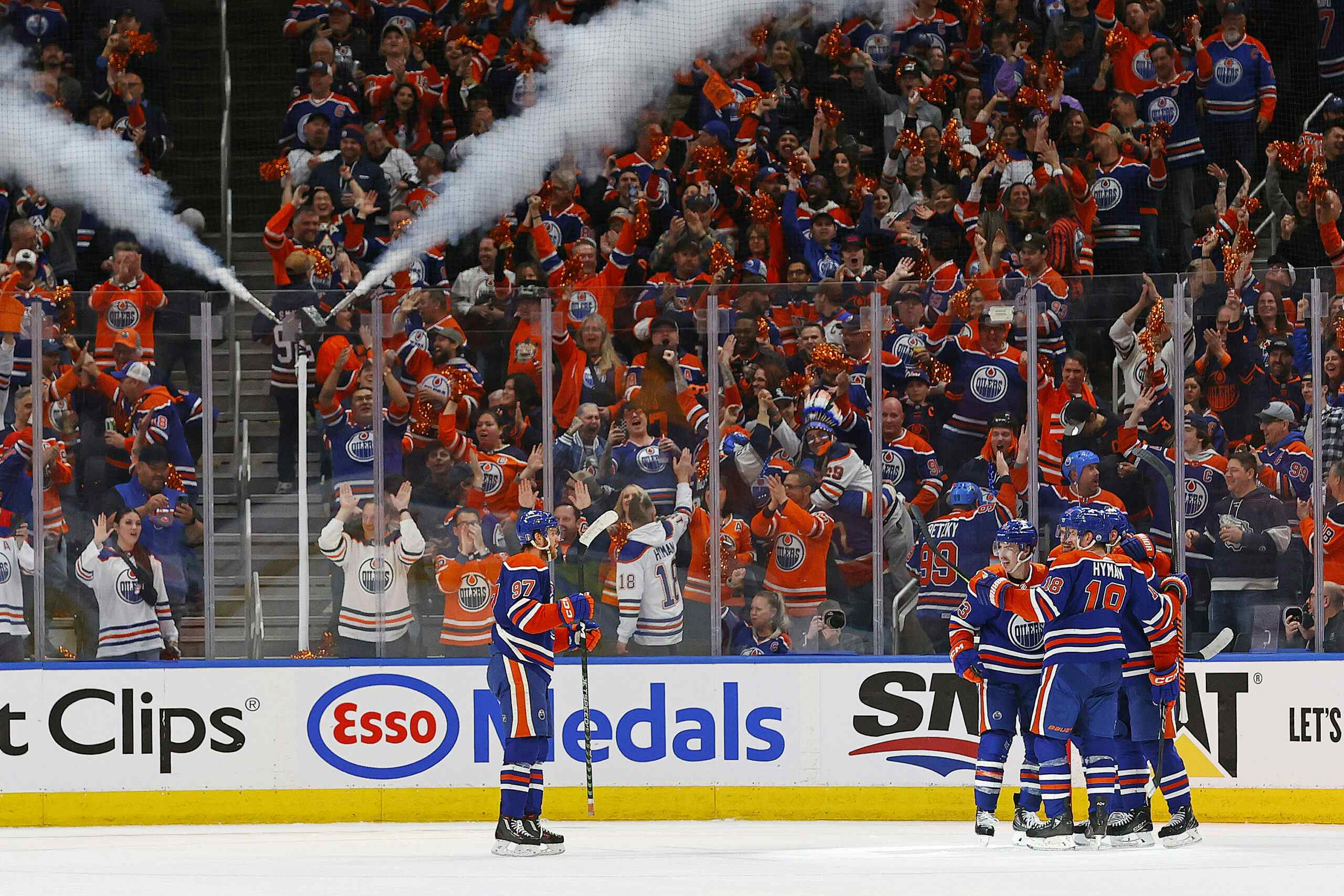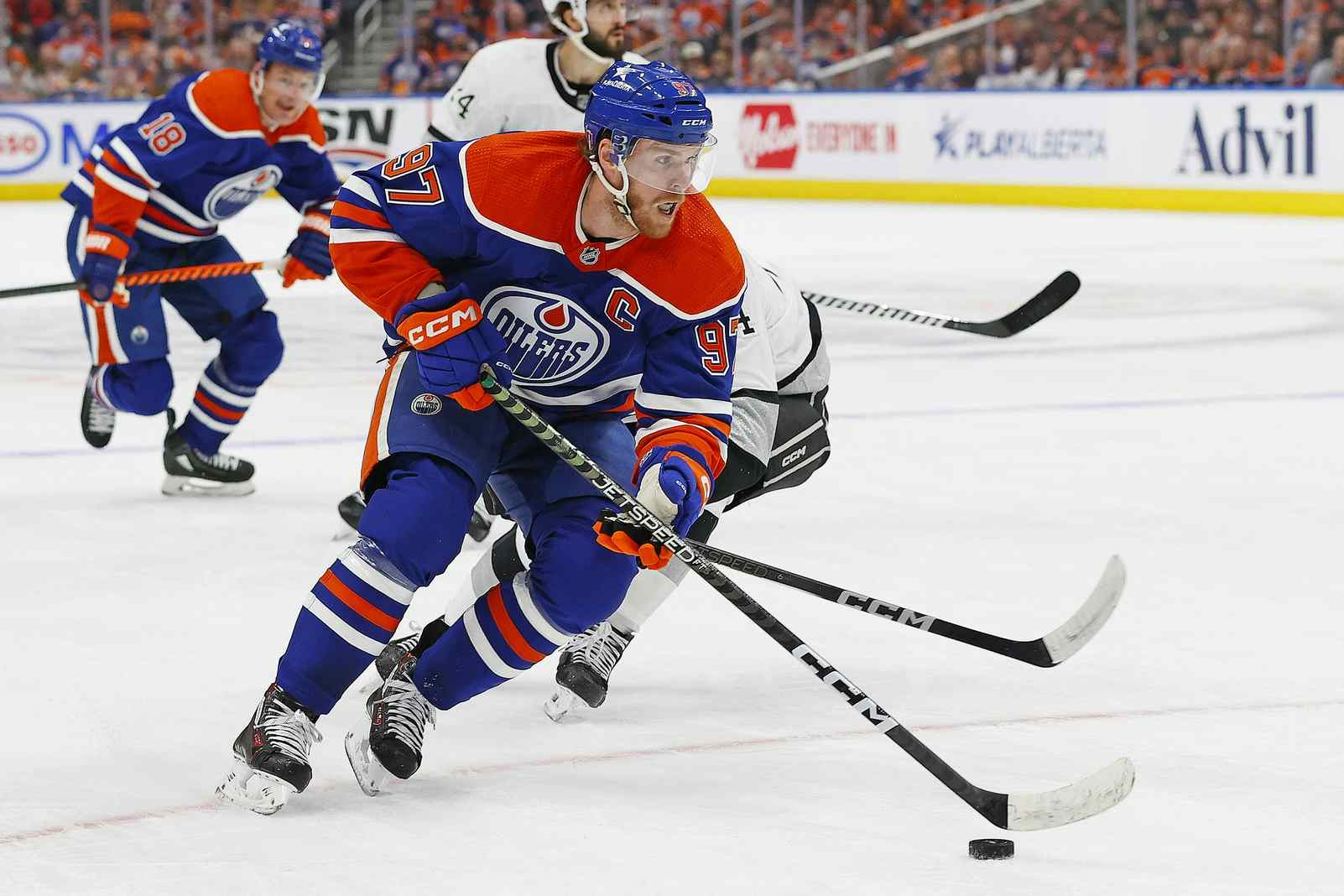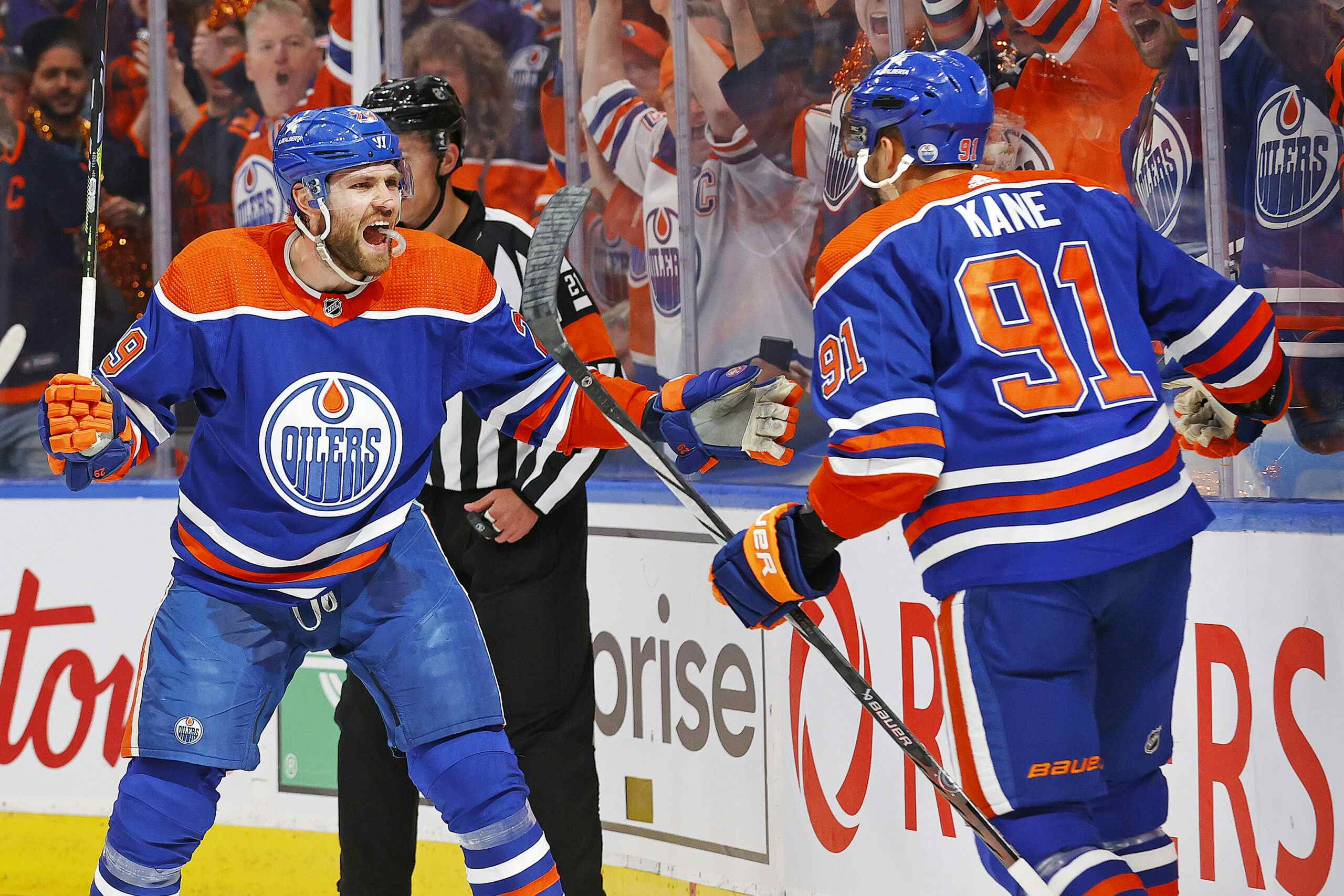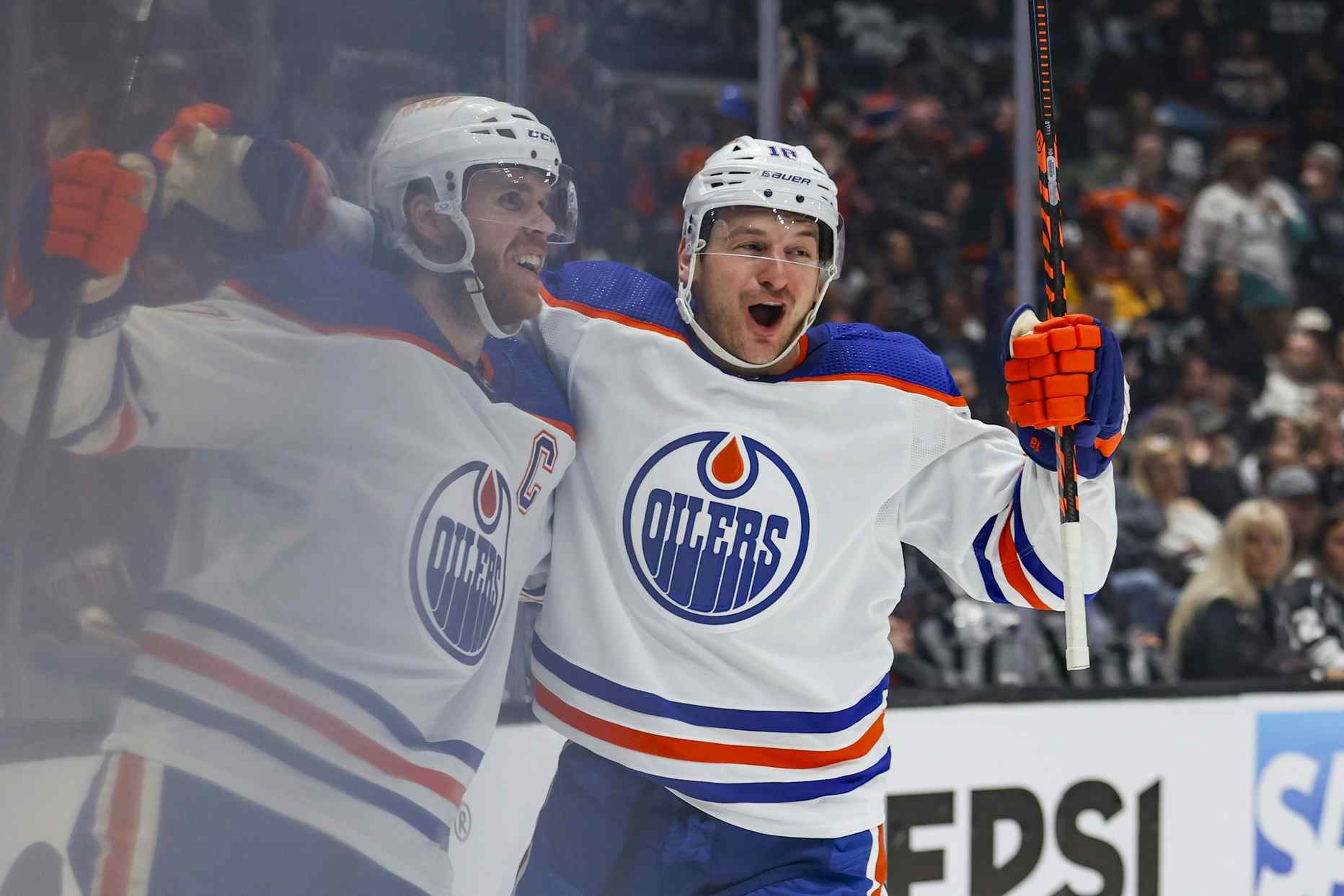Pitlick, Musil and Moroz: Which high second-round pick was the best Oilers’ selection?

Pretty much the only nice thing about finishing near the bottom of the league is the way it improves draft picks. Edmonton had had a top-three selection in five of the last six drafts, and those five players are now key pieces of the team’s long-term plan.
But it’s not just the first-round pick of a team that improves. All of the Oilers’ selections were higher in those years, and on three occasions the team used a second-round pick which was virtually indistinguishable from a first-round draft choice. Those three picks produced Tyler Pitlick, David Musil and Mitch Moroz.
That’s not an overly impressive list, but the question was put to me on Twitter whether in hindsight Musil or Moroz was a better selection for the Oilers (I added in the comparable Pitlick):
Let’s take a look at all three selections, and keep in mind we’re doing this with the advantage of hindsight.
2010 Draft: Tyler Pitlick

It’s fair to say that the Pitlick pick hasn’t worked out the way the Oilers’ thought it would. The big question here is how much injuries have factored. Over his four-season professional career, Pitlick has played a total of 62, 44, 49 and 31 games in each. He’s had head injuries, he’s had leg injuries, he’s had spleen injuries; he’s earned the “injury prone” label but it’s hard to lay any fault on a guy for missing time with a lacerated spleen. The really bizarre thing is how many of these injuries are unconnected to each other; it’s not like he has one recurring problem.
In a perfect world, the Oilers would have taken USHL defenceman Justin Faulk with this pick. The 6’, 215-pound right-shooting rearguard is maybe the best unknown defenceman in the NHL; he’s emerged as a No. 1 rearguard in Carolina and posted 15 goals and 49 points last season.
Of course, a lot of teams are probably kicking themselves about that one. Here’s a look at the five players picked between Pitlick and Faulk:
- No. 32 Jared Knight (Boston): Offensive centre had four goals and 10 points in the AHL last year. Zero NHL games played.
- No. 33 John Mcfarland (Florida): Power forward graduated to the AHL full-time last year, after splitting the previous two years between the AHL and ECHL. Zero NHL games played.
- No. 34 Dalton Smith (Columbus): Physical winger set a career-high with 17 points in the AHL last season. Zero NHL games played.
- No. 35 Ludvig Rensfeldt (Chicago): The Blackhawks didn’t bother giving him an entry-level deal; he’s been an up-and-down player in Sweden’s second-best pro league. Zero NHL games played.
- No. 36 Alex Petrovic (Florida): Late-blooming defenceman had a reasonably impressive 33-game run with the Panthers last year. 46 NHL games played.
As a practical matter, the Oilers weren’t likely to do much better than Pitlick if they’d gone with whoever their second choice at No. 31 was. Faulk is a dream and Petrovic is superior but relative to the quality available Pitlick doesn’t look too bad. The Oilers took Martin Marincin at No. 46 and between Pitlick and Marincin (and with the exception of Faulk and perhaps Jon Merrill) there aren’t a lot of players worth fretting over missing out on.
2011 Draft: David Musil

Musil is pretty much on-track as a prospect, particularly since the development curve on defensive defencemen is pretty slow. In his rookie pro campaign he established himself as a full-time AHL player. In his second professional campaign he moved up the depth chart and earned an NHL cameo. If he can establish himself as a top AHL player next year and an NHL third-pairing option after the deadline he’ll be sticking to the script for his player-type quite well.
In a vacuum, Musil looks okay. The problem for him is that he’s a) one of a bazillion lower-end defensive options in the Oilers’ system and b) there were some really good players on the board.
Edmontonians tend to fixate on two players. Boone Jenner went No. 37 to Columbus and had some vocal supporters on draft day; he’s a 6’2”, 208-pound centre/left wing who plays a physical game and has enough talent to play scoring line minutes already. More recently there’s been a lot of focus on Brandon Saad, an overage pick of Chicago at No. 43, and that’s certainly understandable given his achievements.
But there was a lot of talent available. Just four years out 25 of the 30 players selected in the second round of 2011 have played NHL games, including the next 14 selections after Musil. The Oilers could almost have tossed a dart at their list of potential second round choices and landed a decent player.
2012 Draft: Mitch Moroz
It’s pretty early to be talking about 2011, but it’s really early to be talking about 2012. Only five of the 30 players selected in the second round have appeared in NHL games and outside of New Jersey defenceman Damon Severson (No. 60 overall) and maybe Chris Tierney (No. 55, San Jose) there aren’t really any breakout talents at this point.
With that said, most of the players picked are further along in their development than Moroz, who was bad early in the AHL and found himself buried on the depth chart as a result; he managed just nine points in 66 games.
But it’s early for Moroz, and he contributes things that NHL teams value beyond his scoring. Perhaps most critically, the second round class as a whole in 2012 isn’t terribly compelling; Edmonton may not have fared all that much better with a different selection.

It’s a funny thing; if I were running an NHL expansion team and had my choice of these three players, I’d probably take Musil off the Oilers hands. On the other hand, if I were running the Oilers and had the power to go back and nix one of these selections (with the caveat that Edmonton would instead pick whoever their second choice was) I’d be tempted to cancel the Musil pick given the Oilers’ strength at the position and the wealth of talent on the board.
RECENTLY BY JONATHAN WILLIS
Recent articles from Jonathan Willis





